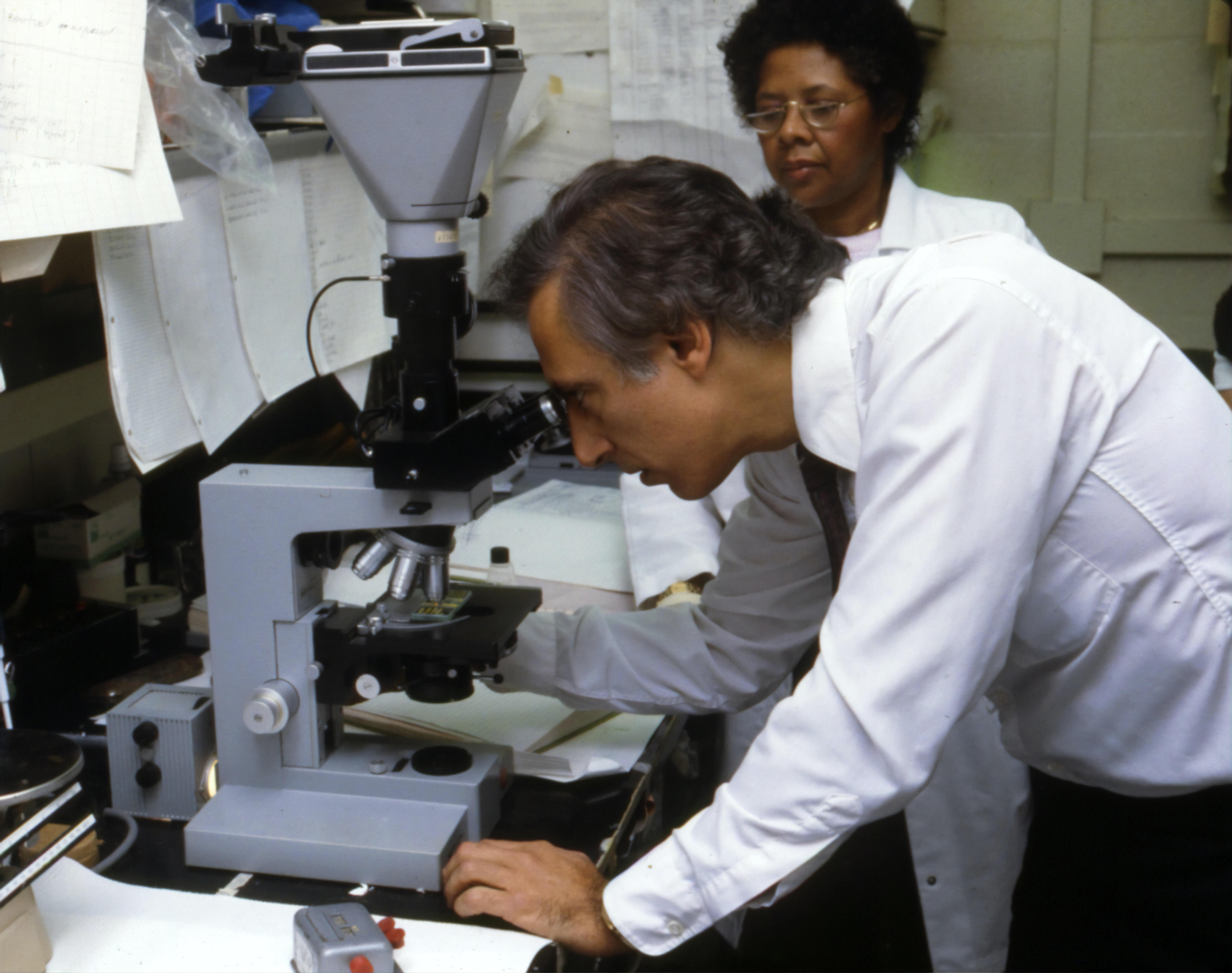In the realm of scientific inquiry, few tools are as indispensable as the microscope. This revolutionary instrument has paved the way for countless discoveries, shedding light on the microscopic world that exists beyond the realms of human perception. Today, we embark on a journey to unlock the secrets held within this marvel of scientific ingenuity. In this article, we will explore three captivating facts about microscopes, delving into their significance in unraveling the mysteries of the unseen. Brace yourself for an enlightening exploration of the microscopic wonders that await!

3 Facts About the Microscope
Microscopes have revolutionized the way we see and understand the world around us. From uncovering the intricate inner workings of cells to revealing the hidden beauty of microscopic organisms, these powerful instruments have played a pivotal role in scientific discovery and exploration. Let’s dive into three fascinating facts about microscopes that highlight their importance in unlocking the secrets of the microscopic realm.
Fact 1: The Invention of the Microscope
One cannot discuss microscopes without acknowledging the brilliant minds behind their creation. In the late 16th century, a father-son duo, Zacharias Janssen and Hans Janssen, made a groundbreaking breakthrough by inventing the first microscope. Their invention consisted of two lenses enclosed within a tube, allowing for enhanced magnification. This remarkable achievement paved the way for a new era of scientific investigation, making the invisible visible. It marked the birth of a tool that would forever change our understanding of the world.
“The invention of the microscope, attributed to Zacharias and Hans Janssen, marked a significant milestone in scientific progress, granting us a window into the intricacies of the unseen.”
Fact 2: The Magnifying Power
One of the most fascinating aspects of microscopes is their ability to magnify objects to astonishing levels. In the early days of microscopes, single-lens designs were capable of magnifying objects up to a remarkable 270 times their original size. This advancement enabled scientists to explore the realm of the microscopic, unlocking hidden details that were previously inaccessible to the naked eye. Imagine the wonder and amazement of witnessing a world of intricate structures and organisms magnified before your eyes.
“With its incredible magnifying power, the microscope allows us to witness the wonders of the minuscule, offering a glimpse into a hidden universe that captivates the imagination.”
Fact 3: The Power of Resolution
Resolution plays a critical role in microscopes as it determines the clarity and level of detail that can be observed. While light microscopes have been a staple tool in laboratories for many years, electron microscopes have pushed the boundaries even further. These highly advanced instruments utilize a beam of electrons instead of light, resulting in dramatically enhanced resolution capabilities. In fact, electron microscopes have a resolving power that is approximately 1000 times greater than that of a traditional light microscope. This extraordinary level of detail allows scientists to study and understand the intricate structures of cells and objects at an unprecedented level.
“The revolution in resolution brought about by electron microscopes has opened up new frontiers in scientific exploration, providing us with unparalleled insights into the hidden intricacies of the microscopic realm.”
In conclusion, microscopes have truly unlocked the secrets of the microscopic world, enabling scientists and researchers to delve deeper into the mysteries of life. From the groundbreaking invention by the Janssen duo to the incredible magnifying power and resolution capabilities of modern microscopes, these instruments have transformed our understanding of the world around us. So next time you gaze into a microscope, remember the immense impact it has had and continues to have on our scientific knowledge and understanding.
“Microscopes have been a catalyst for scientific advancement, allowing us to unveil the hidden secrets and marvels that reside in the microscopic realm.”
Hugo syntax:
Lorem ipsum dolor sit amet, consectetur adipiscing elit. Nulla vitae tincidunt velit, condimentum porta lectus. Curabitur dignissim nibh vitae tellus facilisis, vitae efficitur sem tincidunt. Sed sollicitudin, ipsum ac fermentum luctus, massa odio tincidunt mauris, sit amet tempus quam libero id neque. Curabitur non nibh a enim tempor placerat. Sed efficitur metus at urna faucibus, a mattis ligula sagittis.
Phasellus eu nunc euismod, lobortis magna a, lacinia nulla. Sed bibendum risus ac sodales blandit. Cras leo sapien, aliquet a tincidunt eu, malesuada nec urna. Suspendisse eleifend lectus quis turpis pretium, et tristique nisi dignissim. Mauris vitae est non sem lacinia ornare. Phasellus molestie elit id quam pellentesque, in fringilla mi posuere. Ut et est in nibh eleifend volutpat nec ut elit.
Aenean nec lacus vitae enim volutpat aliquam eu dapibus tellus. Sed sagittis facilisis sem, ut blandit lorem aliquam eu. Quisque dapibus nibh et metus auctor gravida. Pellentesque habitant morbi tristique senectus et netus et malesuada fames ac turpis egestas. In sed rhoncus augue, nec interdum est.
Explore fascinating facts about the microscope and unravel the secrets of this extraordinary scientific instrument. Delve into the incredible world of microorganisms, where tiny creatures come to life under the lens. Witness groundbreaking discoveries and uncover the hidden wonders that lie within the microscopic realm. From advancements in medicine to revolutionary scientific research, the microscope has played a pivotal role in shaping our understanding of the world. Don’t miss the opportunity to embark on this captivating journey of enlightenment.
Praesent ac nisi eget nunc ornare finibus. Fusce aliquet mauris et dapibus ultrices. Sed a arcu sed ante fringilla imperdiet. Vestibulum in sollicitudin dolor. Phasellus non accumsan velit. Integer vel metus sed lacus congue commodo id eu eros. Vivamus fringilla augue ac ex iaculis interdum.
Discover more intriguing facts about the microscope and unravel the mysteries that hide within the realm of the unseen. Unlock the wonders of the microscopic world and appreciate the intricate beauty that lies beyond our naked eye. Journey through the history of scientific exploration and witness how the microscope has revolutionized our understanding of life itself. From the smallest organisms to the hidden structures of cells, the microscope holds the key to unlocking the secrets of our universe. Join us on this enlightening adventure and experience the awe-inspiring revelations that await.
3 Facts About the Microscope
Are you curious about the fascinating history of the microscope? Wonder no more! Click here to explore the inventive journey of this remarkable scientific tool that has revolutionized our understanding of the world: microscope invention history.
But wait, there’s more! Delve into the diverse types and applications of microscopes that have expanded our knowledge in fields such as biology, medicine, and nanotechnology. Discover the hidden wonders of the microscopic world by clicking on this link: types and applications of microscopes.
However, it’s crucial to acknowledge the limitations as well. Unveil the capabilities and boundaries of microscopes, gaining a deeper appreciation for their incredible power to magnify and visualize objects. Explore how they have transformed scientific research and exploration by clicking here: capabilities and limitations of microscopes.
So, if you’re ready to embark on an enlightening journey through the history, types, and limitations of microscopes, click on the hyperlinks above and prepare to be amazed!
The Revolutionary Microscope: Unveiling the Invisible World
[youtube v=”zRgGfp90f8E”]
The microscope, a groundbreaking invention by Zacharias and Hans Janssen, has paved the way for remarkable advancements in scientific exploration. Through the lens of this remarkable device, scientists have gained unprecedented access to the hidden intricacies of the microscopic realm, magnifying objects up to 270 times their original size. With its evolution over time, the microscope has transformed not only our understanding of the world but also our ability to unravel its mysteries.
Exploring the Microscopic Landscape
Microscopes come in various types, including optical, simple compound, electron, stereo, and scanning probe microscopes. Each type offers its own unique capabilities, enabling scientists to observe and study the microscopic wonders of nature. By exploiting the power of magnification, microscopes make it possible to distinguish even the closest structures as separate entities, unraveling the magnificent details unseen by the naked eye.
The Power of Electron Microscopes
Among these types, electron microscopes have revolutionized scientific exploration with their exceptional resolution capabilities. With a resolving power approximately 1000 times greater than that of a traditional light microscope, electron microscopes have unraveled the hidden world at an unprecedented level. Objects can be magnified millions of times, allowing scientists to witness the intricate details of the smallest particles. Through the lens of an electron microscope, a new realm of knowledge has been unveiled, expanding our understanding of the microscopic universe.
From Flea Glasses to Bacterial Realms
The first microscopes were humble instruments initially used to study insects, aptly called flea glasses. However, with the advancements in lens technology, scientists like Anton van Leeuwenhoek discovered the astonishing capabilities of these devices. Powerful lenses allowed Leeuwenhoek to observe the teeming world of bacteria in a single drop of water, prompting a paradigm shift in scientific discovery. Microscopes became indispensable tools in unraveling the mysteries of the living world, paving the way for countless groundbreaking scientific breakthroughs.
Capturing the Unseen: Micrography
When an object is photographed while under the microscope, it gives rise to a unique art form known as micrography. These captivating images capture the hidden beauty and complexity of microscopic structures, opening new avenues for scientific communication and artistic expression. Micrography not only provides a visual representation of the invisible world but also serves as a testament to the remarkable achievements of microscopic exploration.
In summary, the microscope stands as a testament to human ingenuity and curiosity. With its ability to reveal the hidden wonders of the microscopic world, it has revolutionized scientific progress and opened our eyes to the intricacies that lie beyond our immediate perception. From insects to bacteria, and beyond, the microscope continues to shape our understanding of the world around us, pushing the boundaries of scientific exploration and leaving an indelible mark on the annals of human history.
“The microscope is more than a mere instrument; it is a gateway to a universe that lies beyond our vision, revealing the extraordinary hidden beneath the ordinary.”
FAQ
Q: Who invented the first microscope?
A: The first microscope was invented by Zacharias Janssen and Hans Janssen.
Q: Why is it called a microscope?
A: The term “microscope” was taken to honor Galileo Galilei.
Q: What was the first major discovery made with a microscope?
A: The first cell discovery was made with a microscope.
Q: How much could the first single lens microscopes magnify?
A: The first single lens microscopes could magnify up to 270 times.
Q: How does the resolving power of an electron microscope compare to a light microscope?
A: The resolving power of an electron microscope is 1000 times greater than that of a light microscope.
- Unlock 6000+ words beginning with he: A comprehensive analysis - April 20, 2025
- Mastering -al Words: A Complete Guide - April 20, 2025
- Master Scrabble: High-Scoring BAR Words Now - April 20, 2025
















